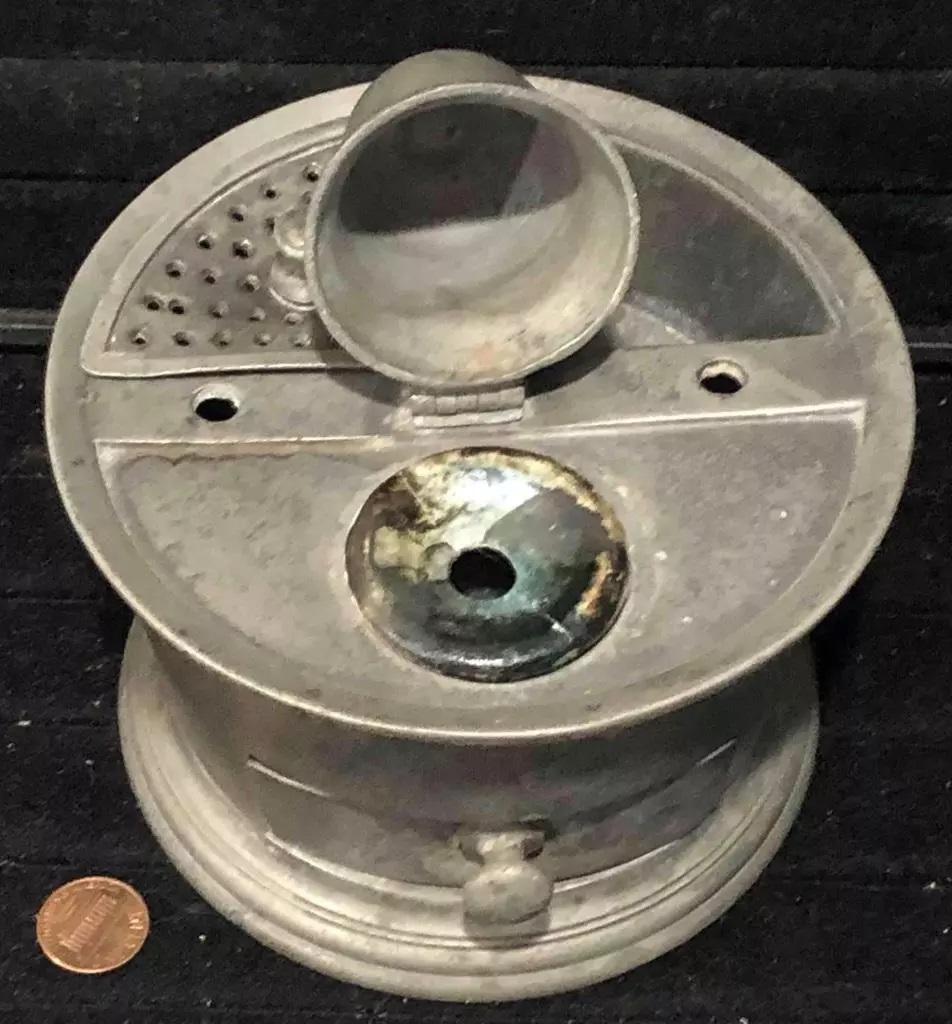
Coutts Banking House Pewter Inkstand
| Categories | Early - Primitive, Pewter / Tin |
| Material | Pewter |
| Markings | See narrative |
| Manufacturer | Undetermined |
| Origin | England |
| Date or Era | circa 1780 to 1800 |
| Measuring | The inkwell is 3 ½” high (5 ⅛” high to the top of the hinged lid); 5 ⅜” diameter at the top and 5” diameter at the base. |
This pewter inkstand with one drawer comes with a history. Round in shape, it has a pull-out drawer, an inkwell covered with a hinged lid, a triangular-shaped sander, and two pen holes. Inscribed on its underside: COUTTS BANKING HOUSE 1775”. The Coutts Banking House is one of the oldest banks in England. Some of its history follows. The inkstand likely dates to the 1780 to 1800 period.
Coutts Banking House:
- The Coutts banking house has a rich history. It originated from a goldsmith-banker’s shop established by Scotsman John Campbell in 1690 in St. Martin’s Lane, London.
- In 1754, a young Edinburgh merchant named James Coutts joined the firm after marrying George Campbell’s niece (George was the sole partner at the time).
- After Campbell’s death in 1761, James Coutts took in his younger brother Thomas, and the firm became Coutts & Coutts.
- In 1775, James was persuaded by influential customers (including Lord Chatham) to sell out, leaving Thomas Coutts as the sole owner of the business. The business was renamed Coutts Banking House.
- This inkwell was made to commemorate Thomas Coutts becoming the sole owner and the business being renamed COUTTS BANKING HOUSE in 1775.
Sold for $152 in July 2024
Content disclaimer. The information posted is the owner’s best knowledge and may not have been vetted by the SOIC. We welcome comments, corrections, and additions, working to make our website information comprehensive and accurate.
Join the Society of Inkwell Collectors (SOIC) – it’s free!
Founded in 1981 as a non-profit organization,
we are documenting inkwells (and accessories).
We’re here to help and inform!











